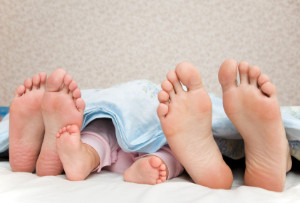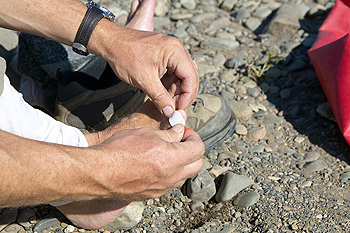Blog
How Is Clubfoot Diagnosed?
Clubfoot is a foot deformity in which one or both of a baby’s feet appear twisted inward at the ankle. Clubfoot is present at birth and can typically be diagnosed via a prenatal ultrasound. Cases of clubfoot that are not diagnosed prenatally are usually diagnosed shortly after the baby’s birth through a simple physical examination. In rare cases, an X-ray or CAT scan may be needed to make the diagnosis. Despite its appearance, clubfoot does not cause pain or discomfort, and generally responds well to treatment. Treatment usually consists of using a series of casts and braces to reposition the child’s foot. For more information about clubfoot and other pediatric foot problems, please consult with a podiatrist.
Making sure that your children maintain good foot health is very important as they grow. If you have any questions, contact Elliot T. Udell, DPM of New York. Our doctor can provide the care you need to keep you pain-free and on your feet.
Keeping Children's Feet Healthy
Having healthy feet during childhood can help prevent medical problems later in life, namely in the back and legs. As children grow, their feet require different types of care. Here are some things to consider...
Although babies do not walk yet, it is still very important to take care of their feet.
Avoid putting tight shoes or socks on his or her feet.
Allow the baby to stretch and kick his or her feet to feel comfortable.
As a toddler, kids are now on the move and begin to develop differently. At this age, toddlers are getting a feel for walking, so don’t be alarmed if your toddler is unsteady or ‘walks funny’.
As your child gets older, it is important to teach them how to take care of their feet.
Show them proper hygiene to prevent infections such as fungus.
Be watchful for any pain or injury.
Have all injuries checked by a doctor as soon as possible.
Comfortable, protective shoes should always be worn, especially at play.
If you have any questions please feel free to contact our office located in Hicksville, NY . We offer the newest diagnostic and treatment technologies for all your foot and ankle needs.
Reminder: When Was the Last Time...?
How Can I Reduce Foot Sweat?
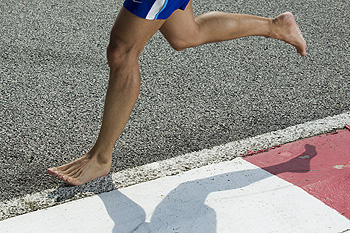 Excessively sweaty feet can be an unpleasant and annoying condition. There are various over-the-counter products available that can help reduce foot sweat. Antiperspirant products in the form of sprays, powders, and lotions can help keep the feet dry. Foot powders and sneaker liners can absorb excess sweat while you go about your day. Your footwear is also an important factor to consider. Wearing shoes made of breathable materials and moisture-wicking socks may help reduce your foot sweat as well. If over-the-counter treatments are not effective in managing your foot sweat, you may have plantar hyperhidrosis, a medical condition that causes the feet to sweat excessively. A podiatrist can diagnose plantar hyperhidrosis and recommend that best course of treatment for you.
Excessively sweaty feet can be an unpleasant and annoying condition. There are various over-the-counter products available that can help reduce foot sweat. Antiperspirant products in the form of sprays, powders, and lotions can help keep the feet dry. Foot powders and sneaker liners can absorb excess sweat while you go about your day. Your footwear is also an important factor to consider. Wearing shoes made of breathable materials and moisture-wicking socks may help reduce your foot sweat as well. If over-the-counter treatments are not effective in managing your foot sweat, you may have plantar hyperhidrosis, a medical condition that causes the feet to sweat excessively. A podiatrist can diagnose plantar hyperhidrosis and recommend that best course of treatment for you.
If you are suffering from hyperhidrosis contact Elliot T. Udell, DPM of New York. Our doctor can provide the care you need to attend to all of your foot and ankle needs.
Hyperhidrosis of the Feet
Hyperhidrosis is a rare disorder that can cause people to have excessive sweating of their feet. This can usually occur all on its own without rigorous activity involved. People who suffer from hyperhidrosis may also experience sweaty palms.
Although it is said that sweating is a healthy process meant to cool down the body temperature and to maintain a proper internal temperature, hyperhidrosis may prove to be a huge hindrance on a person’s everyday life.
Plantar hyperhidrosis is considered to be the main form of hyperhidrosis. Secondary hyperhidrosis can refer to sweating that occurs in areas other than the feet or hands and armpits. Often this may be a sign of it being related to another medical condition such as menopause, hyperthyroidism and even Parkinson’s disease.
In order to alleviate this condition, it is important to see your doctor so that they may prescribe the necessary medications so that you can begin to live a normal life again. If this is left untreated, it is said that it will persist throughout an individual’s life.
A last resort approach would be surgery, but it is best to speak with your doctor to find out what may be the best treatment for you.
If you have any questions please feel free to contact our office located in Hicksville, NY . We offer the newest diagnostic and treatment technologies for all your foot and ankle needs.
Yoga for Plantar Fasciitis Pain
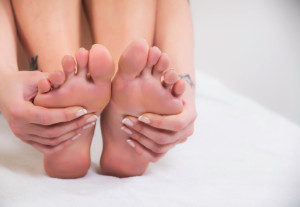 Plantar fasciitis is a condition in which the plantar fascia, a ligament that runs along the bottom of the foot, becomes inflamed. This can cause a stabbing pain in the heel. Stretching the foot may help reduce the pain associated with plantar fasciitis. Did you know that you can stretch the feet while doing yoga? For example, while standing, lift your right heel off of the ground and roll onto your right toes. Then place your right heel back onto the ground and repeat on the opposite foot. Do this several times to stretch the arch area. For more information about the benefits of yoga and stretching for plantar fasciitis pain, please consult with a podiatrist.
Plantar fasciitis is a condition in which the plantar fascia, a ligament that runs along the bottom of the foot, becomes inflamed. This can cause a stabbing pain in the heel. Stretching the foot may help reduce the pain associated with plantar fasciitis. Did you know that you can stretch the feet while doing yoga? For example, while standing, lift your right heel off of the ground and roll onto your right toes. Then place your right heel back onto the ground and repeat on the opposite foot. Do this several times to stretch the arch area. For more information about the benefits of yoga and stretching for plantar fasciitis pain, please consult with a podiatrist.
Plantar fasciitis can be very painful and inconvenient. If you are experiencing heel pain or symptoms of plantar fasciitis, contact Elliot T. Udell, DPM from New York. Our doctor can provide the care you need to keep you pain-free and on your feet.
What Is Plantar Fasciitis?
Plantar fasciitis is the inflammation of the thick band of tissue that runs along the bottom of your foot, known as the plantar fascia, and causes mild to severe heel pain.
What Causes Plantar Fasciitis?
- Excessive running
- Non-supportive shoes
- Overpronation
- Repeated stretching and tearing of the plantar fascia
How Can It Be Treated?
- Conservative measures – anti-inflammatories, ice packs, stretching exercises, physical therapy, orthotic devices
- Shockwave therapy – sound waves are sent to the affected area to facilitate healing and are usually used for chronic cases of plantar fasciitis
- Surgery – usually only used as a last resort when all else fails. The plantar fascia can be surgically detached from the heel
While very treatable, plantar fasciitis is definitely not something that should be ignored. Especially in severe cases, speaking to your doctor right away is highly recommended to avoid complications and severe heel pain. Your podiatrist can work with you to provide the appropriate treatment options tailored to your condition.
If you have any questions please feel free to contact our office located in Hicksville, NY . We offer the newest diagnostic and treatment technologies for all your foot and ankle needs.
Stretching the Feet May Help Heel Spurs
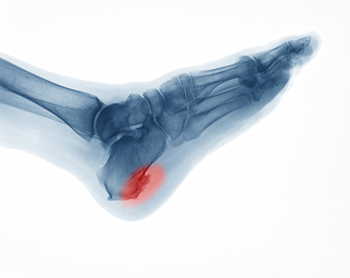 A heel spur is defined as a bony growth that gradually develops on the back or bottom of the heel bone. It can cause severe pain and discomfort, and it may even be difficult to walk. A heel spur can be caused by arthritis, tendonitis, or due to a heel fracture. Mild relief may be found when the affected foot is rested and pain medication for inflammation is taken. Additionally, it is beneficial to perform specific stretches that may help to strengthen the overall foot. If you have heel pain, it may be indicative of a heel spur. It is strongly suggested that you speak with a podiatrist for a proper diagnosis and to determine what the best treatment is for you.
A heel spur is defined as a bony growth that gradually develops on the back or bottom of the heel bone. It can cause severe pain and discomfort, and it may even be difficult to walk. A heel spur can be caused by arthritis, tendonitis, or due to a heel fracture. Mild relief may be found when the affected foot is rested and pain medication for inflammation is taken. Additionally, it is beneficial to perform specific stretches that may help to strengthen the overall foot. If you have heel pain, it may be indicative of a heel spur. It is strongly suggested that you speak with a podiatrist for a proper diagnosis and to determine what the best treatment is for you.
Heel spurs can be incredibly painful and sometimes may make you unable to participate in physical activities. To get medical care for your heel spurs, contact Elliot T. Udell, DPM from New York. Our doctor will do everything possible to treat your condition.
Heels Spurs
Heel spurs are formed by calcium deposits on the back of the foot where the heel is. This can also be caused by small fragments of bone breaking off one section of the foot, attaching onto the back of the foot. Heel spurs can also be bone growth on the back of the foot and may grow in the direction of the arch of the foot.
Older individuals usually suffer from heel spurs and pain sometimes intensifies with age. One of the main condition's spurs are related to is plantar fasciitis.
Pain
The pain associated with spurs is often because of weight placed on the feet. When someone is walking, their entire weight is concentrated on the feet. Bone spurs then have the tendency to affect other bones and tissues around the foot. As the pain continues, the feet will become tender and sensitive over time.
Treatments
There are many ways to treat heel spurs. If one is suffering from heel spurs in conjunction with pain, there are several methods for healing. Medication, surgery, and herbal care are some options.
If you have any questions feel free to contact our office located in Hicksville, NY . We offer the latest in diagnostic and treatment technology to meet your needs.
Finding Relief From Gout Pain
 Severe pain and discomfort are symptoms that often accompany the foot condition that is known as gout. In many patients, the pain can be so debilitating that it can cause an inability to walk. Gout is considered to be a form of arthritis, and it is caused by excess amounts of uric acid in the blood. Gout may develop as a result of eating specific foods that have elevated levels of purines. These can include red meat, shellfish, and drinks that have a large sugar content. Frequently eating these types of foods may cause crystal-like deposits to form in the joints of the big toe, and the entire foot may become irritated and inflamed. Mild relief may be found when healthy eating habits are implemented, including eating fruits and vegetables, in addition to drinking plenty of water daily. If you believe you may have gout, it is strongly suggested that you are under the care of a podiatrist who can help you to manage and treat this condition.
Severe pain and discomfort are symptoms that often accompany the foot condition that is known as gout. In many patients, the pain can be so debilitating that it can cause an inability to walk. Gout is considered to be a form of arthritis, and it is caused by excess amounts of uric acid in the blood. Gout may develop as a result of eating specific foods that have elevated levels of purines. These can include red meat, shellfish, and drinks that have a large sugar content. Frequently eating these types of foods may cause crystal-like deposits to form in the joints of the big toe, and the entire foot may become irritated and inflamed. Mild relief may be found when healthy eating habits are implemented, including eating fruits and vegetables, in addition to drinking plenty of water daily. If you believe you may have gout, it is strongly suggested that you are under the care of a podiatrist who can help you to manage and treat this condition.
Gout is a painful condition that can be treated. If you are seeking treatment, contact Elliot T. Udell, DPM from New York. Our doctor will treat your foot and ankle needs.
What Is Gout?
Gout is a form of arthritis that is characterized by sudden, severe attacks of pain, redness, and tenderness in the joints. The condition usually affects the joint at the base of the big toe. A gout attack can occur at any random time, such as the middle of the night while you are asleep.
Symptoms
- Intense Joint Pain - Usually around the large joint of your big toe, and it most severe within the first four to twelve hours
- Lingering Discomfort - Joint discomfort may last from a few days to a few weeks
- Inflammation and Redness -Affected joints may become swollen, tender, warm and red
- Limited Range of Motion - May experience a decrease in joint mobility
Risk Factors
- Genetics - If family members have gout, you’re more likely to have it
- Medications - Diuretic medications can raise uric acid levels
- Gender/Age - Gout is more common in men until the age of 60. It is believed that estrogen protects women until that point
- Diet - Eating red meat and shellfish increases your risk
- Alcohol - Having more than two alcoholic drinks per day increases your risk
- Obesity - Obese people are at a higher risk for gout
Prior to visiting your podiatrist to receive treatment for gout, there are a few things you should do beforehand. If you have gout you should write down your symptoms--including when they started and how often you experience them, important medical information you may have, and any questions you may have. Writing down these three things will help your podiatrist in assessing your specific situation so that he or she may provide the best route of treatment for you.
If you have any questions, please feel free to contact our office located in Hicksville, NY . We offer the newest diagnostic and treatment technologies for all your foot care needs.
Why Live with Pain and Numbness in Your Feet?
Five Tips for Everyday Foot Care
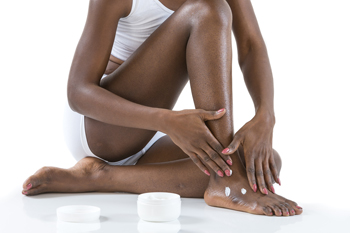 As the foundation of your body, your feet play an important role in helping you go about your day. But despite their importance, we often neglect our feet, increasing our risk of developing various foot problems. Taking small steps every day to care for your feet can help keep them healthy. Wearing comfortable, properly fitted shoes can help prevent problems such as hammertoes, corns, calluses, blisters, ingrown toenails, and general foot pain. Wearing socks can keep excess moisture off your feet, and pad the foot, preventing excess wear and tear. Taking walks regularly helps strengthen the muscles of the feet. Finally, washing and drying the feet thoroughly can help prevent foot odor and fungal infections, while moisturizing the feet can prevent dry and cracked heels. For more information about everyday foot care, please consult with a podiatrist.
As the foundation of your body, your feet play an important role in helping you go about your day. But despite their importance, we often neglect our feet, increasing our risk of developing various foot problems. Taking small steps every day to care for your feet can help keep them healthy. Wearing comfortable, properly fitted shoes can help prevent problems such as hammertoes, corns, calluses, blisters, ingrown toenails, and general foot pain. Wearing socks can keep excess moisture off your feet, and pad the foot, preventing excess wear and tear. Taking walks regularly helps strengthen the muscles of the feet. Finally, washing and drying the feet thoroughly can help prevent foot odor and fungal infections, while moisturizing the feet can prevent dry and cracked heels. For more information about everyday foot care, please consult with a podiatrist.
Everyday foot care is very important to prevent infection and other foot ailments. If you need your feet checked, contact Elliot T. Udell, DPM from New York. Our doctor can provide the care you need to keep you pain-free and on your feet.
Everyday Foot Care
Often, people take care of their bodies, face and hair more so than they do for their feet. But the feet are a very important aspect of our bodies, and one that we should pay more attention to. Without our feet, we would not be able to perform most daily tasks.
It is best to check your feet regularly to make sure there are no new bruises or cuts that you may not have noticed before. For dry feet, moisturizer can easily be a remedy and can be applied as often as necessary to the affected areas. Wearing shoes that fit well can also help you maintain good foot health, as well as making it easier to walk and do daily activities without the stress or pain of ill-fitting shoes, high heels, or even flip flops. Wearing clean socks with closed shoes is important to ensure that sweat and bacteria do not accumulate within the shoe. Clean socks help to prevent Athlete’s foot, fungi problems, bad odors, and can absorb sweat.
If you have any questions please feel free to contact our office located in Hicksville, NY . We offer the newest diagnostic and treatment technologies for all your foot and ankle needs.
What to Do if You Get a Foot Blister
Blisters are fluid-filled pockets of skin that can develop on the feet, typically due to friction from your shoes rubbing against your skin. If you develop a foot blister, there are several things that you should do to help the blister heal. Do not remove the overlying skin of the blister. This bit of raised skin protects the area underneath it, and removing it could expose the underlying skin to infections and lead to increased pain. Leaving the blister alone, rather than popping or draining it, will also prevent infection and help it heal faster. If the blister has torn or popped on its own, thoroughly disinfect the area and cover it with a dressing. If you have a blister on your foot that is not healing, or one that is causing you severe pain or appears to be infected, it is suggested that you see a podiatrist for treatment.
Blisters are prone to making everyday activities extremely uncomfortable. If your feet are hurting, contact Elliot T. Udell, DPM of New York. Our doctor can provide the care you need to keep you pain-free and on your feet.
Foot Blisters
Foot blisters develop as a result of constantly wearing tight or ill-fitting footwear. This happens due to the constant rubbing from the shoe, which can often lead to pain.
What Are Foot Blisters?
A foot blister is a small fluid-filled pocket that forms on the upper-most layer of the skin. Blisters are filled with clear fluid and can lead to blood drainage or pus if the area becomes infected.
How Do Blisters Form?
Blisters on the feet are often the result of constant friction of skin and material, usually by shoe rubbing. Walking in sandals, boots, or shoes that don’t fit properly for long periods of time can result in a blister. Having consistent foot moisture and humidity can easily lead to blister formation.
Prevention & Treatment
It is important to properly care for the affected area in order to prevent infection and ease the pain. Do not lance the blister and use a Band-Aid to provide pain relief. Also, be sure to keep your feet dry and wear proper fitting shoes. If you see blood or pus in a blister, seek assistance from a podiatrist.
If you have any questions, please feel free to contact our office located in Hicksville, NY . We offer the newest diagnostic and treatment technologies for all your foot care needs.
Athletes and Flat Feet
 The medical condition that is known as flat feet is noticeable while standing on the floor, and is generally caused by genetic factors. Some people can live with flat feet and have no issues or pain arise, but many athletes affected by this ailment can result in serious injury if not prepared for. The arch acts similar to shock absorbers, and can help in pushing off when walking and running. Patients who are afflicted with flat feet may feel pain and discomfort while participating in sporting activities, which may be caused by loose tendons. Additionally, these patients may have difficulty standing for extended periods of time, and may experience pain in other areas of the body, including the feet, knees, hips, and lower back. If you have flat feet, please consult with a podiatrist who can determine the right treatment for you.
The medical condition that is known as flat feet is noticeable while standing on the floor, and is generally caused by genetic factors. Some people can live with flat feet and have no issues or pain arise, but many athletes affected by this ailment can result in serious injury if not prepared for. The arch acts similar to shock absorbers, and can help in pushing off when walking and running. Patients who are afflicted with flat feet may feel pain and discomfort while participating in sporting activities, which may be caused by loose tendons. Additionally, these patients may have difficulty standing for extended periods of time, and may experience pain in other areas of the body, including the feet, knees, hips, and lower back. If you have flat feet, please consult with a podiatrist who can determine the right treatment for you.
Flatfoot is a condition many people suffer from. If you have flat feet, contact Elliot T. Udell, DPM from New York. Our doctor will treat your foot and ankle needs.
What Are Flat Feet?
Flatfoot is a condition in which the arch of the foot is depressed and the sole of the foot is almost completely in contact with the ground. About 20-30% of the population generally has flat feet because their arches never formed during growth.
Conditions & Problems:
Having flat feet makes it difficult to run or walk because of the stress placed on the ankles.
Alignment – The general alignment of your legs can be disrupted, because the ankles move inward which can cause major discomfort.
Knees – If you have complications with your knees, flat feet can be a contributor to arthritis in that area.
Symptoms
- Pain around the heel or arch area
- Trouble standing on the tip toe
- Swelling around the inside of the ankle
- Flat look to one or both feet
- Having your shoes feel uneven when worn
Treatment
If you are experiencing pain and stress on the foot you may weaken the posterior tibial tendon, which runs around the inside of the ankle.
If you have any questions please feel free to contact our office located in Hicksville, NY . We offer the newest diagnostic and treatment technologies for all your foot and ankle needs.
More...
Do Your Child's Feet Hurt?
Stress Fractures Occur Gradually
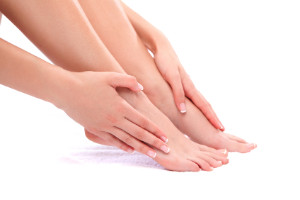 The condition that is known as a stress fracture can often affect the feet. It generally occurs gradually and can happen as a result of repetitive stress on the bones of the feet. Some of the symptoms that are often associated with this ailment can include weakness in the affected area, and the foot may appear to be bruised and swollen. If symptoms are felt that may be indicative of a stress fracture, it is beneficial if any high-impact activity is temporarily ceased until the foot has completely healed. If you are experiencing signs of a stress fracture, and would like additional information about how to treat it, please consult with a podiatrist.
The condition that is known as a stress fracture can often affect the feet. It generally occurs gradually and can happen as a result of repetitive stress on the bones of the feet. Some of the symptoms that are often associated with this ailment can include weakness in the affected area, and the foot may appear to be bruised and swollen. If symptoms are felt that may be indicative of a stress fracture, it is beneficial if any high-impact activity is temporarily ceased until the foot has completely healed. If you are experiencing signs of a stress fracture, and would like additional information about how to treat it, please consult with a podiatrist.
Stress fractures occur when there is a tiny crack within a bone. To learn more, contact Elliot T. Udell, DPM from New York. Our doctor can provide the care you need to keep you pain free and on your feet.
How Are They Caused?
Stress fractures are the result of repetitive force being placed on the bone. Since the lower leg and feet often carry most of the body’s weight, stress fractures are likely to occur in these areas. If you rush into a new exercise, you are more likely to develop a stress fracture since you are starting too much, too soon. Pain resulting from stress fractures may go unnoticed at first, however it may start to worsen over time.
Risk Factors
- Gender – They are more commonly found in women compared to men.
- Foot Problems – People with unusual arches in their feet are more likely to develop stress fractures.
- Certain Sports – Dancers, gymnasts, tennis players, runners, and basketball players are more likely to develop stress fractures.
- Lack of Nutrients – A lack of vitamin D and calcium may weaken the bones and make you more prone to stress fractures
- Weak Bones – Osteoporosis can weaken the bones therefore resulting in stress fractures
Stress fractures do not always heal properly, so it is important that you seek help from a podiatrist if you suspect you may have one. Ignoring your stress fracture may cause it to worsen, and you may develop chronic pain as well as additional fractures.
If you have any questions, please feel free to contact our office located in Hicksville, NY . We offer the newest diagnostic and treatment technologies for all your foot care needs.
Preventing Heel Spur Pain
 Heel spurs are buildups of calcium on the heel bone that can irritate the tissues of the heel, causing pain. There are several things that you can do to prevent heel spur pain. Make sure that you wear properly-fitting, supportive shoes that your feet can move freely in, and avoid worn out shoes that do not adequately support your feet. Maintain a healthy weight in order to put less stress on your feet. Make sure that you give yourself enough time to rest and recover following intense workouts. If you are experiencing heel pain, you may want to look into wearing insoles designed for heel pain. For more information about heel spurs and how to treat them, consult with a podiatrist today.
Heel spurs are buildups of calcium on the heel bone that can irritate the tissues of the heel, causing pain. There are several things that you can do to prevent heel spur pain. Make sure that you wear properly-fitting, supportive shoes that your feet can move freely in, and avoid worn out shoes that do not adequately support your feet. Maintain a healthy weight in order to put less stress on your feet. Make sure that you give yourself enough time to rest and recover following intense workouts. If you are experiencing heel pain, you may want to look into wearing insoles designed for heel pain. For more information about heel spurs and how to treat them, consult with a podiatrist today.
Heel spurs can be incredibly painful and sometimes may make you unable to participate in physical activities. To get medical care for your heel spurs, contact Elliot T. Udell, DPM from New York. Our doctor will do everything possible to treat your condition.
Heels Spurs
Heel spurs are formed by calcium deposits on the back of the foot where the heel is. This can also be caused by small fragments of bone breaking off one section of the foot, attaching onto the back of the foot. Heel spurs can also be bone growth on the back of the foot and may grow in the direction of the arch of the foot.
Older individuals usually suffer from heel spurs and pain sometimes intensifies with age. One of the main condition's spurs are related to is plantar fasciitis.
Pain
The pain associated with spurs is often because of weight placed on the feet. When someone is walking, their entire weight is concentrated on the feet. Bone spurs then have the tendency to affect other bones and tissues around the foot. As the pain continues, the feet will become tender and sensitive over time.
Treatments
There are many ways to treat heel spurs. If one is suffering from heel spurs in conjunction with pain, there are several methods for healing. Medication, surgery, and herbal care are some options.
If you have any questions feel free to contact our office located in Hicksville, NY . We offer the latest in diagnostic and treatment technology to meet your needs.
What Type of Foot Conditions Can Result From Wearing Flip Flops?
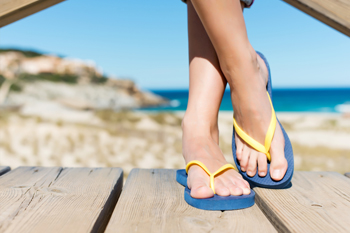 Flip flops are a popular type of shoe that is worn in the summer months. Despite the simplicity of wearing these types of shoes, it is thought that they may cause harm to the feet. The Achilles tendon may become sore as a result of the little or no arch support offered by flip flops. Some patients may notice blisters forming between the toes where the thong, which helps to keep the shoe on the foot, rubs against the skin. People who decide to wear flip flops may benefit from choosing shoes that are designed with supportive materials, as this may help to reduce the risk of getting blisters and calluses. If you would like additional information about what type of flip flops to purchase, please consult with a podiatrist.
Flip flops are a popular type of shoe that is worn in the summer months. Despite the simplicity of wearing these types of shoes, it is thought that they may cause harm to the feet. The Achilles tendon may become sore as a result of the little or no arch support offered by flip flops. Some patients may notice blisters forming between the toes where the thong, which helps to keep the shoe on the foot, rubs against the skin. People who decide to wear flip flops may benefit from choosing shoes that are designed with supportive materials, as this may help to reduce the risk of getting blisters and calluses. If you would like additional information about what type of flip flops to purchase, please consult with a podiatrist.
Flip-flops can cause a lot of problems for your feet. If you have any concerns about your feet or ankles, contact Elliot T. Udell, DPM from New York. Our doctor will assist you with all of your foot and ankle needs.
Flip-Flops and Feet
Flip-flops have managed to become a summer essential for a lot of people. While the shoes may be stylish and easy to slip on and off, they can be dangerous to those who wear them too often. These shoes might protect you from fungal infections such as athlete’s foot, but they can also give you foot pain and sprained ankles if you trip while wearing them.
When Are They Okay to Wear?
Flip-flops should only be worn for very short periods of time. They can help protect your feet in places that are crawling with fungi, such as gym locker rooms. Athlete’s foot and plantar warts are two common fungi that flip-flops may help protect your feet against.
Why Are They Bad for My Feet?
These shoes do not offer any arch support, so they are not ideal for everyday use. They also do not provide shock absorption or heel cushioning which can be problematic for your feet. Additionally, you may suffer from glass cuts, puncture wounds, and stubbed toes since they offer little protection for your feet.
More Reasons Why They Are Bad for Your Feet
- They Slow You Down
- May Cause Blisters and Calluses
- Expose Your Feet to Bacteria
If you have any questions, please feel free to contact our office located in Hicksville, NY . We offer the newest diagnostic and treatment technologies for all your foot care needs.
